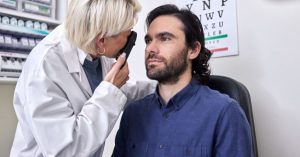Call for your appointment today 914-666-4665 | Mt. Kisco, New York

According to the authors, the 14-day course effectively cleared the patients’ erythema migrans rashes and “prevented the development of objective neurologic, cardiac, or rheumatologic manifestations.” One patient was retreated with amoxicillin. Two others could not be evaluated at 1-year follow-up due to a recurrent erythema migrans (EM) rash.
But 4 out of the 24 patients went on to develop “Post-treatment Lyme disease Syndrome” (PTLDS). Individuals with PTLDS have had “subjective symptoms attributed to Lyme disease that had persisted continuously or intermittently for at least 6 months following completion of antibiotic treatment with amoxicillin,” writes Wormser from New York Medical College in the journal Diagnostic Microbiology and Infectious Disease.
This failure rate is arguably still too high for patients presenting with an EM rash.
The actual failure rate with a 14-day course of treatment might be higher in patients who have a delay in treatment, suffer from more severe symptoms and/or have co-infections with other tick-borne pathogens.
Editor’s note: “PTLDS” remains a controversial term that I do not endorse, given that there is no test to prove the Lyme infection has cleared.
Related Articles:
The best antibiotics to treat Borrelia miyamotoi?
Could dormancy allow Lyme disease to survive antibiotics?
Video: More problems with 2-week course of antibiotics for Lyme disease
References:
- G.P.Wormser, K.C. Brady,M.S. Cho, et al., Efficacy of a 14-day course of amoxicillin for patients with erythema migrans, Diagnostic Microbiology and Infectious Disease.




I honestly believe that Wormser and his cohorts are being paid way too much to make these type of statements and diagnosis. They are not uncovering the whole truth about their research nor how they arrived at this conclusion and that only hurts the Lyme community, no one else. I also believe they are in the pocket of the SSA as quack doctors that think it’s ok to Google Lyme for answers to an ALJ such as those in San Antonio and Austin Texas that are too lazy to do their own research